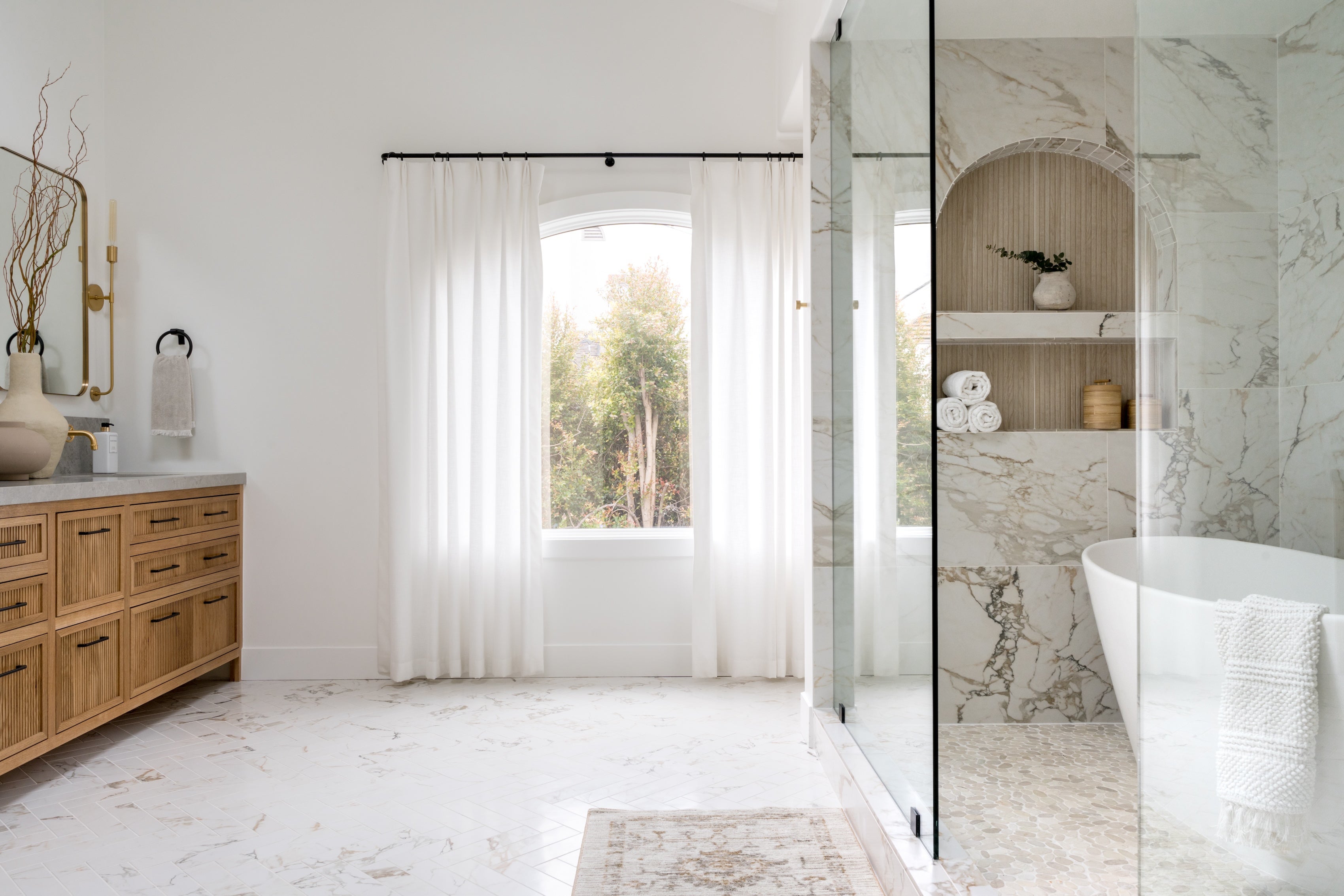Finding the perfect billing strategy for your firm typically involves a lot of trial and error. This week, we asked six designers—Elle Cantrell, Danielle Chiprut, Christina Loucks, Jacqueline Norrise, Francis Toumbakaris and Alexis Vitale—what system they’ve landed on and why it works best for them.

Steady-Going
“As someone who isn’t disciplined about tracking hours, I’ve found that a flat-fee billing structure works best for me and my firm. I believe that the creative and intellectual capital we bring to the table deserves a premium, and I excel at quick conception and creativity, solving floor plans and transforming spaces rapidly. If I billed hourly, I would leave so much money on the table. My formula calculates a percentage of the overall budget for furnishings and decor, typically ranging from 20 to 40 percent, depending on the project’s complexity and scale and the amount of custom millwork and furniture I plan to design. This flat-fee structure ensures clarity and predictability for our clients. They stop whining over bills and questioning line items on monthly invoices. We request a nonrefundable project-commitment fee, ranging from 20 to 50 percent of the overall design fee to secure a project. I always tell clients, ‘If you want a spot on our calendar, I need to know you’re serious.’ By the final presentation, we typically have collected our full fee. For substantial projects where design fees exceed $300,000, I prefer a monthly payment plan [with] equal installments for the project’s anticipated duration. These projects usually involve renovation, and I refer to this as a ‘gym membership with Francis Interiors’—a hefty one indeed. This approach ensures steady cash flow for a year or more, which is my favorite billing strategy.” —Francis Toumbakaris, Francis Interiors, New York

Dual Systems
“We have a two-part fee structure consisting of hourly rates and a flat procurement fee. The design firm that I worked at was structured the same way, and I saw the benefit to charging hourly, as the projects often grow in scope. Clients are so different with the amount of time needed based on their level of involvement in the project, so estimating a fixed fee is nearly impossible. We track our hours daily and can always provide a record if the clients require it. I can also use the data from previous projects to create estimates for new clients in order to help manage the budget and expectations.” —Elle Cantrell, Elle Du Monde, Atlanta

Tailored to You
“We bill services and time hourly, billed monthly. We bill cost-plus for purchases, and the percentage varies depending on [whether the product is] custom or wholesale/trade. We bill this and bundle items together to bill with less frequency to help the client with efficiency and keep it manageable. We landed on the strategy with time, experience, networking with other designers, and client feedback. Our clients like to pay via wire or bank transfer, and working to keep billing efficient helps keep those client fees down, as well as time paying bills. Most important is developing a system that best fits your particular client type and your company’s unique service offerings.” —Christina Loucks, Christina Loucks Design Group, New York

Balancing Act
“In our design studio, we’ve spent quite a bit of time figuring out the best way to handle our billing. We’ve tried everything you can think of—from flat fees to hourly rates and even a mix of both. After lots of experimentation, we’ve found that billing hourly throughout each project phase works best for us. At the beginning of each project, we like to provide an estimated range of hours in our proposals. This helps set clear expectations and lets our clients see the value of our time. Internally, we break down the hours per phase and set milestones to catch any overages early on. This keeps things running smoothly and helps us avoid the dreaded scope creep. Over the years, our billing strategy has evolved through lots of trial and error. We’ve learned to be flexible and responsive to our clients’ needs while also finding ways to keep our projects on track and profitable. It’s all about striking that perfect balance.” —Danielle Chiprut, Danielle Rose Design Co., Rockville Centre, New York

In the Loop
“When it comes to our billing strategy, we have tested multiple pricing structures. Typically designers charge hourly, flat fees, price per square foot, or percentage of project. We have found that hourly has worked for our business. Now, I wouldn’t recommend it if you are not good with tracking hours, as this is a good way to lose money on your project. Having a great program you can access from your phone from anywhere truly has helped track our hours. It’s important we are very detailed from the beginning in how we charge for hours. In the proposal, we break it down by space and scope of work. We give them an estimate by space so they can get a big picture on overall hours. We also believe it’s important that clients get biweekly hour updates and bills so there are no surprises and they start to understand how we charge. At the end of each project we review our profitability versus total scope of work and hours on the project. We also review any expenses that occurred on the job. The best advice I can give is do what is best for you, works for you, and will deliver profitability and overall efficiency.” —Alexis Vitale, Vitale Design Group, Hermosa Beach, California

Transparency Is Key
“My billing strategy offers flexibility and transparency by charging a flat rate for consultations and an hourly rate for full-service design projects. This allows clients to manage costs easily for consultations and ensures a tailored approach for larger, custom projects. For full-service design, the hourly rate accommodates different client needs, whether they prefer hands-on project management or require comprehensive support. This ensures clients receive exactly the support they need without over- or under-paying.” —Jacqueline Norrise, ADL Interiors, Berkeley, California





























